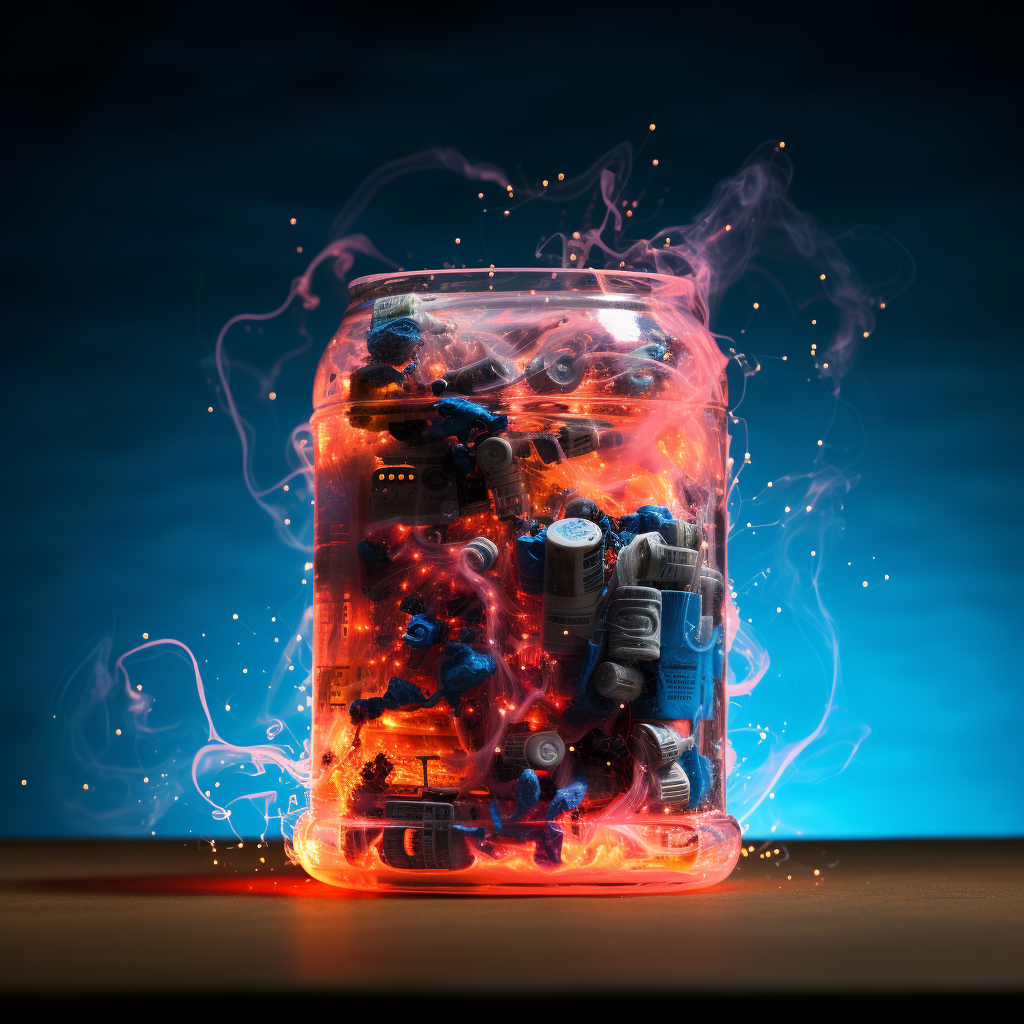
Lithium-ion batteries, the powerhouse behind many of our everyday gadgets, have been a groundbreaking innovation in energy storage technology. At the core of these batteries is the need for efficient and reliable electrolytes that can facilitate the flow of ions between the anode and cathode. With the pursuit of ever-higher energy densities and faster charging times, lithium metal anodes are emerging as a compelling choice. However, their compatibility with different electrolytes, be it liquid or polymer, is a hot topic of research and debate.
Understanding the relationship between lithium metal anodes and the electrolytes they pair with is crucial. It not only influences battery performance but also impacts safety, lifespan, and commercial viability. This article delves into the intricacies of these interactions, pulling from the latest research and real-world applications to shed light on this pivotal topic.
Background on Lithium Metal Anodes
Lithium metal anodes are not a novel concept. In fact, they were initially considered even before the inception of lithium-ion batteries. The allure of lithium as an anode material is primarily due to its high theoretical specific capacity of about 3860 mAh/g. This is nearly ten times the capacity of common graphite anodes used in commercial lithium-ion batteries today.
But with this incredible capacity comes a set of challenges. Lithium metal anodes are prone to form dendritic structures during cycling. These dendrites can pierce through the separator, leading to internal short circuits and potentially hazardous conditions. It's these safety concerns that initially led to a shift towards graphite anodes.
The choice of electrolyte plays a crucial role in the formation and growth of dendrites. It acts as the medium through which lithium ions move between the anode and cathode. The electrolyte's stability, ionic conductivity, and compatibility with the lithium metal are vital factors determining the overall efficiency and safety of the battery.
Liquid Electrolytes: Prospects and Challenges
Liquid electrolytes, typically composed of lithium salts dissolved in organic solvents, have been the staple in lithium-ion batteries for years. They offer good ionic conductivity and are relatively easy to produce on a large scale.
Prospects:
- High Ionic Conductivity: A significant advantage of liquid electrolytes is their inherent high ionic conductivity, facilitating faster charge and discharge rates.
- Mature Production Processes: With years of commercial production behind them, manufacturing processes are optimized for cost and scale.
Challenges:
- Dendrite Growth: Liquid electrolytes are prone to facilitating dendritic growth, especially at high charge/discharge rates.
- Safety Concerns: The organic solvents in liquid electrolytes are flammable. Combined with dendrite risk, this can lead to potential safety hazards.
- Limited Electrochemical Window: Many liquid electrolytes have a narrow electrochemical stability window, limiting their compatibility with high-voltage cathodes.
Polymer Electrolytes: Potential and Hurdles
Polymer electrolytes emerged as an alternative to liquid electrolytes, offering the promise of improved safety and potential compatibility with lithium metal anodes.
Potential:
- Reduced Dendrite Growth: Polymer electrolytes can suppress dendrite growth to an extent, enhancing battery safety.
- Inherent Safety: They aren't as flammable as their liquid counterparts, reducing risks associated with thermal runaway.
- Design Flexibility: Polymer electrolytes allow for more flexible battery design, paving the way for rollable or foldable batteries.
Hurdles:
- Lower Ionic Conductivity: Typically, polymer electrolytes have lower ionic conductivity compared to liquid electrolytes, potentially limiting charge/discharge rates.
- Temperature Dependence: The performance of polymer electrolytes can be highly dependent on temperature, with reduced efficiency at lower temperatures.
- Complex Manufacturing: The production process for polymer electrolytes can be more intricate and costly than for liquid ones.
Comparative Analysis: Liquid vs. Polymer Electrolytes
When evaluating the best fit for lithium metal anodes, it's imperative to weigh the advantages and disadvantages of both liquid and polymer electrolytes side-by-side.
- Ionic Conductivity: Liquid electrolytes have the upper hand due to their inherent high ionic conductivity. This property allows for faster charging and discharging, beneficial for applications requiring quick energy bursts. Polymer electrolytes, although showing promise with emerging technologies, still lag in this domain.
- Safety: The dendritic growth associated with liquid electrolytes poses a significant safety risk. While the issue isn't entirely eliminated with polymer electrolytes, they do show a lower propensity for dendrite formation. Moreover, the non-flammable nature of polymer electrolytes enhances battery safety further.
- Manufacturability and Scalability: Liquid electrolytes have the advantage of established and mature production processes, making them more cost-effective at scale. Polymer electrolytes, on the other hand, involve more intricate manufacturing processes, which can be a barrier to large-scale commercialization.
- Flexibility and Design: Polymer electrolytes are more adaptable in design, potentially paving the way for innovative battery architectures like bendable or wearable batteries.
- Temperature Dependence: Liquid electrolytes generally maintain consistent performance across a range of temperatures. Polymer electrolytes can be sensitive to temperature fluctuations, with performance often diminishing at cooler temperatures.

Latest Research and Advancements
Recent years have witnessed a surge in research directed at enhancing the compatibility of lithium metal anodes with both liquid and polymer electrolytes.
- Liquid Electrolyte Innovations: Scientists are exploring additives and novel solvent combinations that can stabilize the interface between the lithium metal anode and the liquid electrolyte, thereby reducing dendrite growth.
- Polymer Electrolyte Breakthroughs: Research is geared towards increasing the ionic conductivity of polymer electrolytes. Innovations like hybrid gel-polymer electrolytes, which combine the best of both liquid and polymer worlds, are being investigated.
- Solid-State Electrolytes: Beyond liquid and polymer, solid-state electrolytes are emerging as potential game-changers. These electrolytes, often ceramic or glass-based, can potentially offer high ionic conductivity, reduced dendrite growth, and improved safety.
The Path Forward: Practical Implementation and Real-world Applications
For lithium metal anodes to become mainstream, theoretical research needs to transition into real-world applications. Efforts are underway in industries ranging from automotive to consumer electronics to integrate lithium metal anode-based batteries.
- Automotive Industry: Given the push for longer-range electric vehicles, the automotive sector is keenly interested in leveraging the high capacity of lithium metal anodes.
- Consumer Electronics: The demand for lighter, longer-lasting batteries in smartphones, laptops, and wearable devices makes this sector a promising candidate for lithium metal anode adoption.
- Grid Storage: With the growing need for renewable energy storage solutions, large-scale batteries with high energy densities can benefit significantly from the advancements in lithium metal anode technology.
Conclusion
The synergy between lithium metal anodes and their paired electrolytes is at the forefront of next-generation battery technology. While challenges persist, the potential benefits in terms of energy density, charge rate, and form factor are too promising to ignore. With continued research and industry collaboration, the dream of ultra-high capacity, safe, and reliable batteries is on the horizon.

